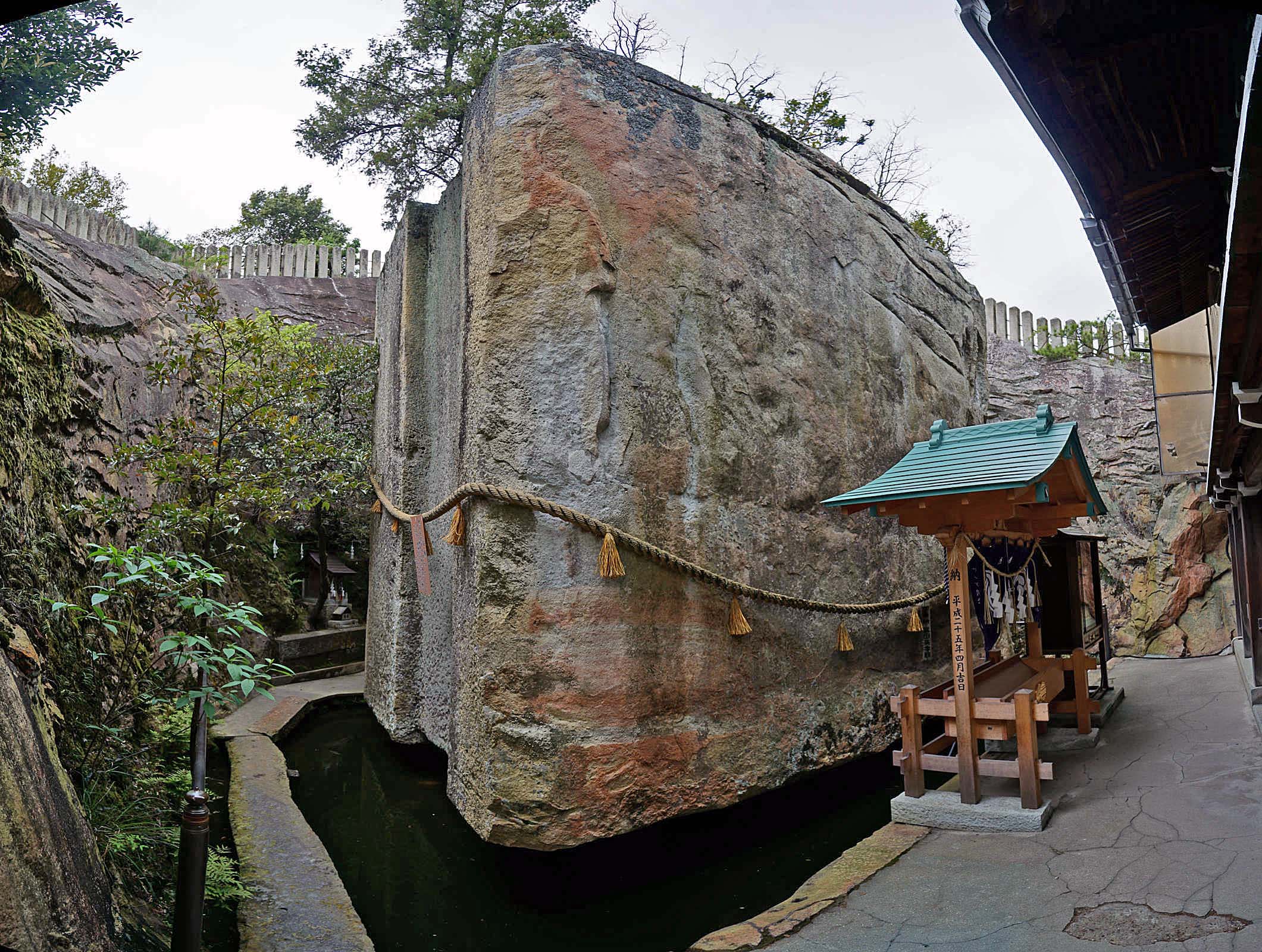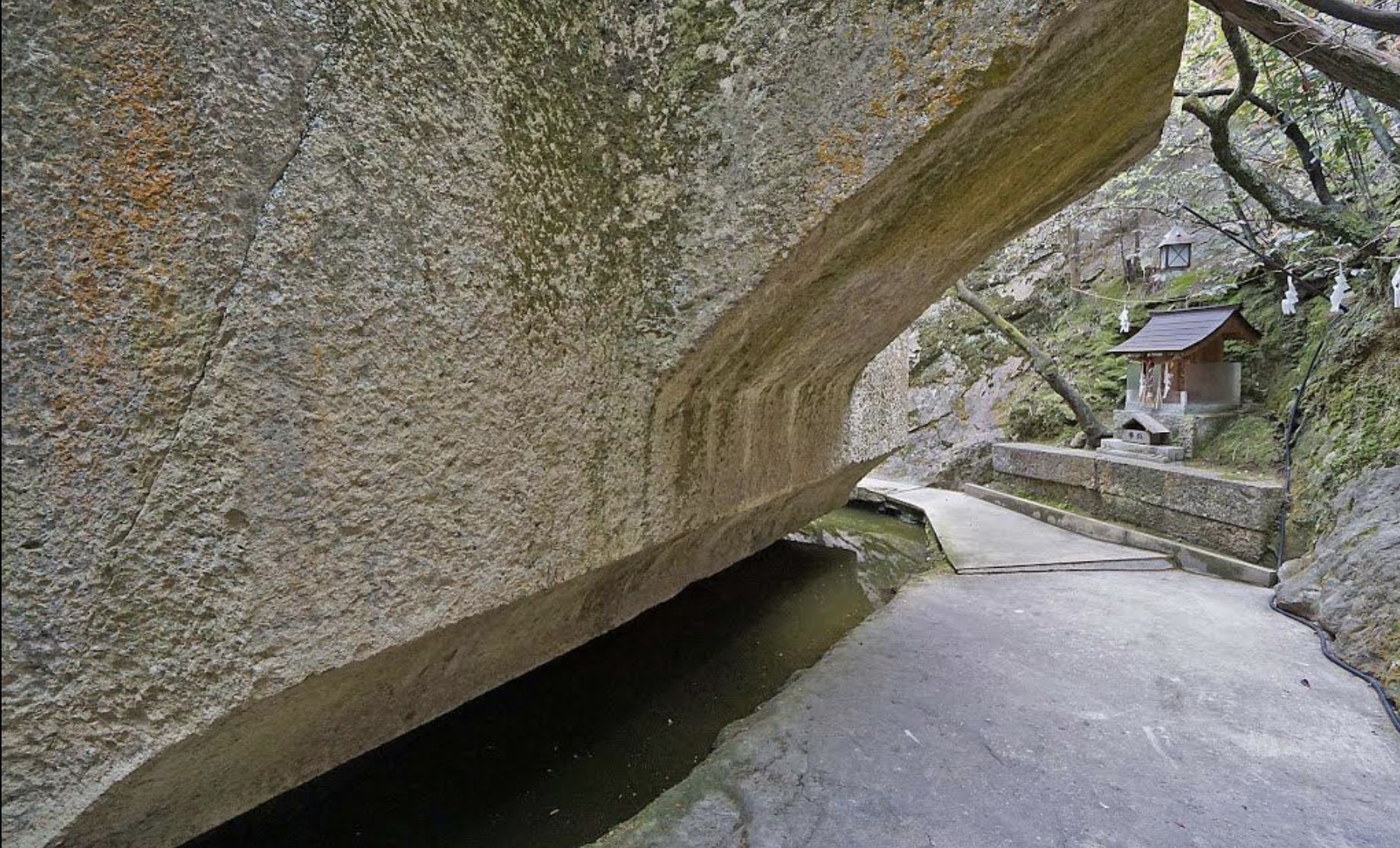Carved directly from bedrock, this colossal structure is thought by some to be an astonishing 16,000 years old.
Nestled in the lush landscapes of Japan’s mountainous terrain, the Ishi-no-Hoden megalith emerges as an awe-inspiring relic of antiquity. This monumental structure, intricately carved from a single piece of bedrock, stands as a silent witness to the ingenuity of ancient civilizations. Archaeologists and historians speculate that this towering edifice could be as old as 16,000 years, making it a prehistoric marvel. Weighing a staggering 500 tons, its dimensions are not just physically imposing but also evoke a sense of mystical reverence. Ishi-no-Hoden’s unique positioning, appearing to levitate above the water’s surface, has been a source of fascination and bewilderment for centuries, drawing innumerable visitors who seek to unravel its secrets.
Myth and Legend: The Story of Ama no Iwafune

is more than just a monumental stone – it’s a nexus of myth and legend. Affectionately referred to as “the floating rock from the heavens,” this enigmatic structure is deeply intertwined with Japanese folklore. The most captivating of these tales is the legend of Ama no Iwafune, the “heavenly rock ship.” According to myth, this celestial vessel carried a deity to Japan, signifying a divine descent. The narrative, rich in symbolism, portrays the rock as an emblem of unparalleled strength and indestructibility, perhaps a metaphorical representation of a powerful, otherworldly flying vehicle. Such stories not only add a layer of mystical allure to Ishi-no-Hoden but also offer insights into the cultural and spiritual beliefs of ancient Japan.
Unveiling Masuda-no-Iwafune: A Monument Shrouded in Mystery
The intrigue of Japan’s ancient structures extends to the Masuda-no-Iwafune megalith, an enigma in its own right. This behemoth, composed of 800 tons of granite, stands apart in Japanese architectural history due to its distinctive design and construction. Its closest architectural relatives are not found in Japan but rather in the distant lands of India, specifically in Mahabalipuram. Here, similar structures are accompanied by mythologies that mirror those of Masuda-no-Iwafune, replete with references to divine beings from the heavens. This remarkable resemblance raises intriguing questions about ancient cultural exchanges and shared mythological narratives between these distant civilizations.
Deciphering the Stone Ships: Between Myth and Reality
The true nature of Masuda-no-Iwafune remains shrouded in mystery, with theories about its purpose ranging widely among scholars. Some suggest it may have been a tomb, a monument to honor the dead. Others see it as a physical embodiment of the “skyboats” described in ancient Japanese lore. The etymology of its name provides a clue to its legendary significance; “Masuda” denotes the region it resides in, while “iwafune” literally translates to “stone ship” or “rock ship,” hinting at a connection to mythical celestial journeys. This linguistic link adds a compelling dimension to the debate, bridging the gap between tangible archaeological evidence and the intangible realm of myths and legends.
Have something to add? Visit Curiosmos on Facebook. Join the discussion in our mobile Telegram group


